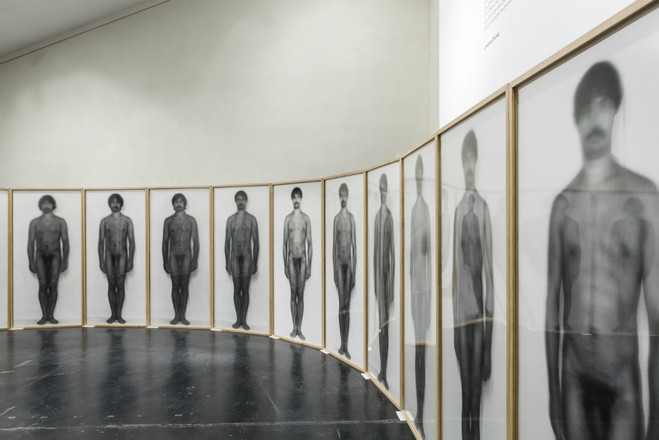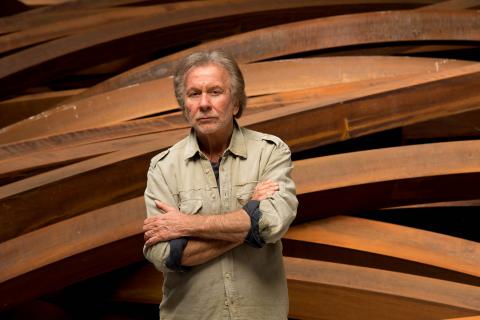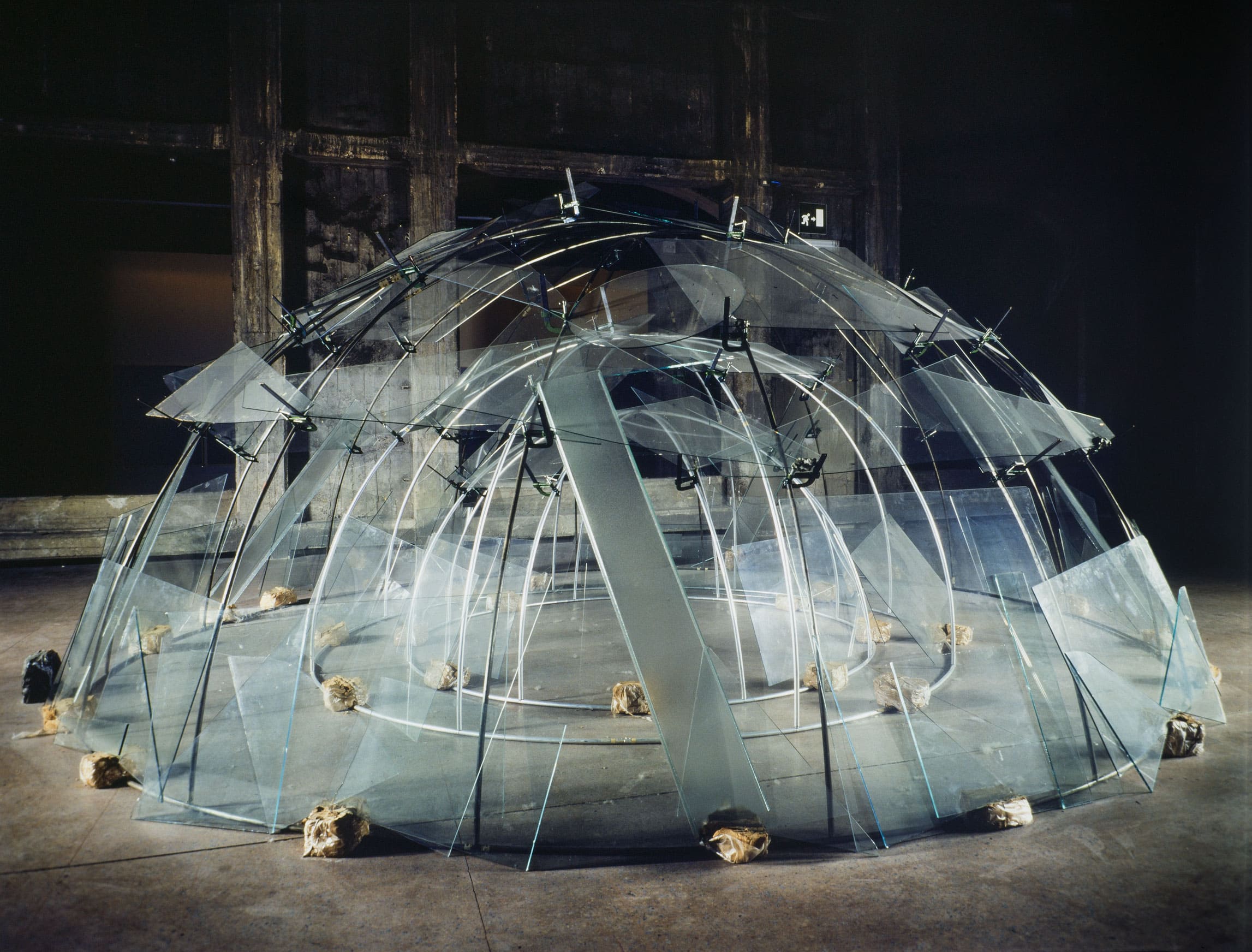
Decoded for you in ART PRESS

No more abusing the gallery
About the exhibition Histoire(s) sans fin at the Réverbère in Lyon until December 28
It is always sad when an art gallery closes. It is even more infuriating if this temple of living art closes its doors after having animated the cultural and artistic life of its city and region for more than four decades, as the Réverbère did with national resonance in Lyon. Founded in 1981 by photographer Jacques Damez and his partner Catherine Derioz, this ambitious gallery has maintained until the end the demanding positioning of devoting itself exclusively to contemporary photography in all its forms. This is how its walls have welcomed in a lovingly enhancing setting works by Marc Riboud, Bernard Piossu, William Klein or Denis Roche on the great classics side as well as less recognized works by Beatrix von Conta or François Deladerrière. The reasons for the closure of the legendary Réverbère are sadly easy to guess. The gallery survived the Covid crisis. But it was unable to cope with the explosion in energy and production costs. It received no support from municipal authorities, as if Lyon did not remember being the city of the Lumière brothers. The sinking of the Réverbère is also emblematic of the struggle of contemporary art in general. In a market driven by a new generation of collectors attracted, according to Catherine Dérioz, by "the buzz, the decorative and the speculative," a poetic approach concerned with offering exhibitions with real artistic coherence seems to be from another age. By preferring penniless collectors to financiers who would have led it towards bankable sensationalism, the gallery has in a way scuttled itself in order to remain free and independent. It is this spirit of independence that pushed the Réverbère to conclude its epic in apotheosis with a very last exhibition entitled Histoire(s) sans fin in the form of a retrospective and a grand finale. Waiting for other adventures outside the walls. As if contemporary art never ends dying. It's its way of life.
Illustrations: Self-portrait of Jacques Damez (1959)

Arte Povera: The Theater of Objects
About the exhibition arte povera at the Bourse de commerce in Paris until January 20, 2025
Showing that arte povera is not just a movement limited to a period is the ambition displayed by the exhibition to which the Bourse de commerce is currently devoting all of its spaces. Because arte povera is, as Art Press elegantly puts it, "a poetics that borrows from avant-garde theater a new relationship to space and things." And not as a simple reaction to the industrialization and Americanization of Italian society. It is on the basis of this bias that some fifty works from the Pinault gallery were chosen, as well as two hundred and fifty others borrowed from various European collections. Since almost all avant-garde movements shone during a very brief period of a few years, showing how these inventors of the future are still present is an ambitious challenge. A dive into the genesis of the movement is necessary to understand its spirit. Boetti, Koinellis and Pascali, pillars of the inaugural exhibition in 1967, posited that an exit from the system, a detachment from traditional conventions, was possible from below through the affirmation of the simplicity of raw materiality. It is by probing all the dimensions of space that the framework of representation can be overflowed. However, space is not abstract here. It is a stage to be experienced, history, habitation. Like Mario Merz's igloos. Like the objects that qualify and define the places they populate. It is in this spirit that Pistoletto captures the image of the spectators in his work in a mirror, to mix it with life-size silhouettes. He will go further with Oggetti in meno whose "minus objects" each start a separate path to finally leave it unfinished, making precisely this heterogeneous incompleteness the meaning of their exhibition. Through the questioning it raises of the relationships between Man and objects in space before witnesses, the theater is a source of inspiration for arte povera. It naturally begins with the "poor theater" theorized by Jerzy Grotowski. But, like the Living Theater, it is in a dramatic art rejecting the distance between actors and spectator that the soul of arte povera can be grasped: the theater of lo Zoo, a company founded by Pistoletto and Colnaghi. It is the rags and tinsel of the Zoo that will become the visual symbols of poor art. Following Quartucci, the theater becomes the heart of the concept of exhibition as a new stage of representation. All in a raw form without apparent staging. The emblematic figure of the exhibition as a stage is Paolini, who will distinguish himself in particular with the white canvases presented on the recto and verso of Senza titolo as well as by his collaborations with Quartucci. It is in this rapprochement of pictorial art with the theater, this "existential communion" according to Anselmo's words, that arte povera is shaped. In the galleries that promote it, the works are anything but isolated objects delivered to the contemplation of detached spectators in places conceived as natural extensions of these objects. The label of arte povera was declared obsolete by the leading figures of the movement themselves in 1970. From Celant to Amman, who opened the debate towards "visualized thought processes". Matter being no more than a "vehicle of expression". Arte Povera will thus have been a moral form of theater of the object of which its contemporary, pop art, will have made the plastic and "rich" symbol of consumerism. Arte Povera, itself, has no second degree. It did not want to give itself the means.
Illustrations:
|
Senza titolo de Giulio Paolini (1963)
|
Igloo de Mario Merz
|
Bernar Venet: me is elsewhere
About the exhibition Peintures génératives by appointment at the Perrotin gallery
What is an algorithm? Using the pretext of reporting on Bernar Vernet's generative paintings, Catherine Millet of Art Press asks herself this question and provides a simple answer, devoid of any geek snobbery. It's a cooking recipe! A description of the operations by which starting ingredients will make it possible to achieve the desired result. It's a protocol. Like those that Bernar Venet has computer scientists develop to create plastic works that digitally reconstruct collapses evoking those of large metal parts that he is known for having spectacularly orchestrated. The possibility of creating works by his words alone, as AI allows today, could only seduce this artist who likes to abstract himself from his creations. He is notably conspicuous by his absence at his own openings, which he schedules without having seen a single piece among those that will be presented there. His way of opposing subjective expression and lyricism that are often confused with art does not reside in the promotion of order and rationality. Venet belongs to the school of chaos. Objective order is only there to be methodically ruined according to a specific protocol, an algorithm. We understand better that at his New York debut, the man chose to exhibit enlarged photographs of works on mathematics, astrophysics, grammars or stock market prices or even weather forecasts. The important thing is to deny all subjectivity and all possibility of interpretation by the viewer in the absence of any personal expression by the artist. "I am a machine," Warhol said.
Illustrations: Bernar Venet and his Collapse: 200 tons, Le Muy, 2015 Photo Jérôme Cavaliere, Marseille. © Adagp, Paris, 2020








































































